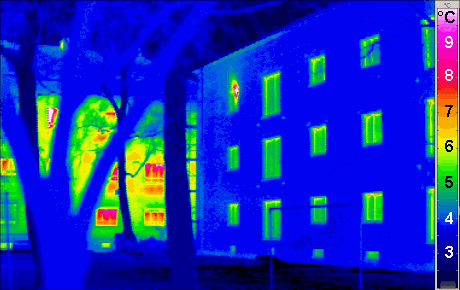The New York Times recently featured a thought-provoking opinion piece on how human body heat may be used to meet the heating demands of modern buildings and other infrastructure. “The Power of a Hot Body” introduces the concept of building occupant body heat as a “green” design strategy that is both novel and low-tech. The blog showcases opportunities for capturing occupant heat from different types of urban buildings and facilities, such as subway stations, train stations, and malls.
 Crowded Subway - Tokyo. (Image by flickr user tokyoform)
Crowded Subway - Tokyo. (Image by flickr user tokyoform)It is great to see popular discussions on sustainable energy move beyond a limited focus on renewable energy production (e.g., solar photovoltaics and wind turbines). However, from the perspective of HVAC design and engineering, the “body heat” concept is not at all the “renewable” or “alternative” energy that it is claimed to be in the blog post. Body heat, and the heat from lighting and other miscellaneous equipment, is merely heat gain or waste heat. Warm air from internal building heat gains, from any source, has been extensively used by building designers, operators, and occupants in ways that are not readily apparent in this NYT blog post (and perhaps not readily apparent to the blog’s audience).
Internal heat gain (i.e., warm air) has been leveraged for space heating via three fundamental, tried-and-true “mechanisms”:
- Heat gain supplements/offsets fossil fuel heating (i.e., thermostat temperature setpoints are satisfied with less calls for fossil fuel heat).
- Heat gain and fossil fuel heat recovery of ventilation air (i.e., not wasting heat by transferring heat from outgoing airstreams to incoming airstreams).
- Heat recovery of heat rejected/transferred from cooling systems.
Mechanism #1: Any building with space heating, be it a modern, high performance green building or an old low-efficiency building, will experience a fossil fuel heat load reduction in proportion to the internal heat gain. The magnitude of the heat load reduction is dependent upon the heat losses through the building envelope. This is why modern, high performance buildings are designed and built with windows and walls with low heat losses. When the rate of heat loss is reduced down to the rate of internal heat, no fossil fuel space heating is required (this is one of the primary design principles of the modern “Passive House” movement).
 Thermogram of a Passivhaus building, with traditional building in background. (Photo credit: Wikipedia)
Thermogram of a Passivhaus building, with traditional building in background. (Photo credit: Wikipedia)Mechanism #2: Heat recovery ventilation systems transfer heat from exhaust air to make-up air. Many buildings with a high ventilation requirement, notably conference centers and large retail, have economically utilized heat recovery ventilation systems. These systems have also been applied in small residential buildings (e.g., “Passive House” homes).
Mechanism #3: Space cooling (i.e., air conditioning) systems move heat from one air mass to another. High performance buildings often make productive use of the rejected heat, such as pre-heating domestic hot water for showers and lavatories. Heat recovery from air conditioning systems is essentially the “pipes and pumps” advocated in the NYT blog post.
“The Power of a Hot Body” cautions that the use of occupant heat may be limited by the fact that there are relatively few opportunities to transfer heat from building-to-building (i.e., “neighbor helping neighbor”). While the author’s consideration of limitations is commendable, the primary opportunities for efficient, productive, and economical heat recovery are overlooked: heat recovery within (not between) buildings.
It is great that proven, low-tech, energy saving ideas are part of popular discussions on energy sustainability. The extent to which forward-thinking building owners and building occupants understand these concepts will go a long way in increasing demand for a more sustainable built environment.



